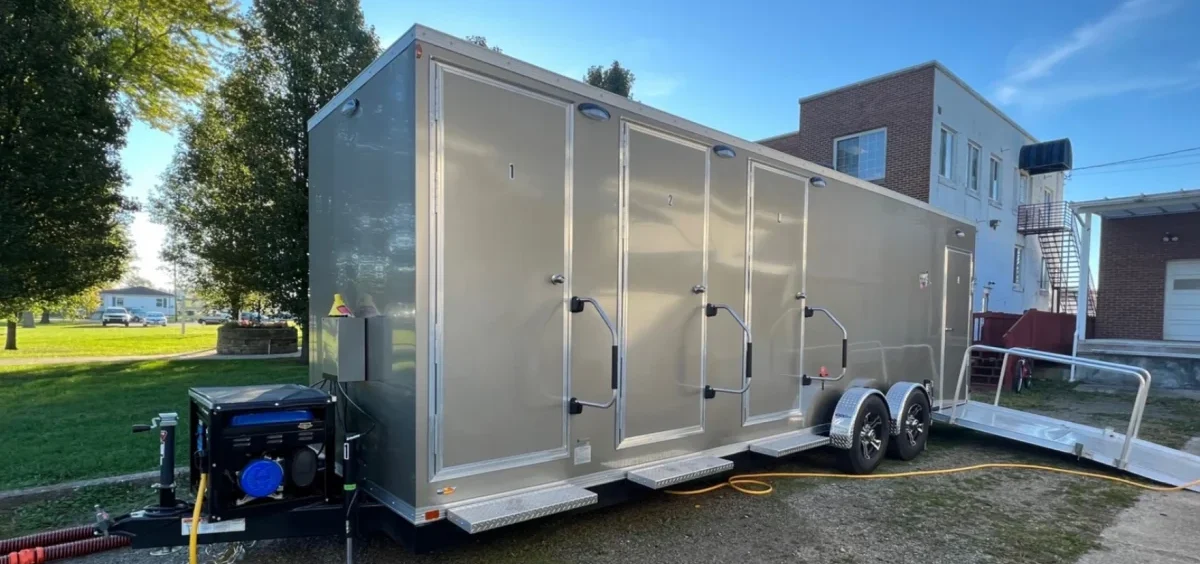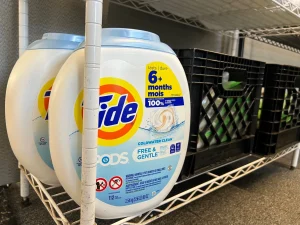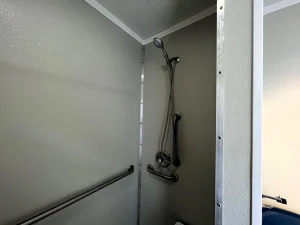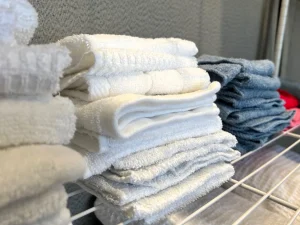News

Taking showers on the road: How a “Soap-n-Hope” effort aims to address growing homelessness
By: Erin Gottsacker | The Ohio Newsroom
Posted on:
CIRCLEVILLE, Ohio (The Ohio Newsroom) — It’s just after 9 o’clock in the morning and the sky is clear blue, the air just crisp enough that Tommy Morrison can see his breath.
He’s been homeless for just over a year, and while he doesn’t mind camping outside when the weather’s warm, this is the time of year when he says living on the streets becomes uncomfortable.

“I had to wear layers of clothes and I [couldn’t] take a shower or jump in anywhere there was water to clean up,” he said.
This winter, though, Morrison won’t have to choose between staying warm and staying clean, thanks to a new service: the Soap-n-Hope Mobile Hygiene Unit.
The Pickaway County Community Action Agency, or PICCA, purchased the 32-foot-long trailer with an $85,000 grant from the City of Circleville’s opioid settlement fund. It’s equipped with three showers and a few laundry machines, all kept running by a roaring generator.
Inside, Morrison carefully checks the pockets of his jeans and jackets before loading them into one of the compact washing machines. A peer supporter shows him how to turn it on, and the machine whirs to life.
In about an hour, Morrison will have a week’s worth of freshly laundered clothes.
Soap-n-Hope as a response to addiction and homelessness
Homelessness in Pickaway County jumped 8% in the last year, a number on par with the rest of the state. According to data from the Department of Housing and Urban Development, Ohio’s unhoused population rose 7% between 2022 and 2023.
Jeff Phillips, PICCA’s business development director, says a variety of factors likely contribute to the rise locally: the climbing cost of rent, mental illness and in some cases substance use, including opioids.

And the people at PICCA believe a shower and clean clothes can be the first step toward finding that permanent place, toward signing a lease with a landlord and landing the new job.
“One of the biggest barriers for a lot of our local homeless community and even just low-income families in the community is clean clothing, personal hygiene, to be able to go to a job interview not just clean, but confident,” said Nick Pruitt, who spearheaded PICCA’s Soap-n-Hope project.
Even if the unit doesn’t help land county residents employment, Phillips said having access to showers and laundry machines restores a sense of wellbeing.
“The ability to have a shower, to have someplace they can go to do their laundry, it provides that human dignity that is so essential to our character and what we do and how we feel.”
Tommy Morrison agrees.
“At least, when I go out in public, I won’t be smelling so terrible,” he said.
The rising cost of housing
The Soap-n-Hope service also comes as a relief to Josh Brown. He’s currently sleeping at the men’s shelter in town, which has beds but no showers. Before the Soap-n-Hope unit opened, he alternated showering at a friend’s house and a nearby church.

“Especially here in Circleville, for some reason stuff is more expensive than what you would expect it to be,” he said.
The area’s population is booming, and the county doesn’t have enough affordable housing to go around.
“Our housing stock is older, so it’s harder to maintain these older units with utilities and all the upgrades,” said Becky Hammond, PICCA’s executive director. “And we’ve got a lot of people coming in and buying these more rundown units and they’re flipping them and charging rents that most people can’t afford, even at what they say is a living wage.”
It’s another one of the multitude of factors contributing to growing homelessness in the region. Just like the causes, Hammond said the solutions have to be numerous too. The Soap-n-Hope unit is just one way her organization is trying to help people in need.
Right now, it’s parked outside PICCA’s office, within walking distance of the local men’s shelter. But eventually, PICCA hopes to purchase a truck to take the service on the move, meeting the need where it’s at.
Over the course of 18 years, Ohio and its communities are receiving nearly $2 billion from pharmaceutical companies to compensate for harm caused by opioids. The Ohio Newsroom is following the money. This is our settlement story of the month.

